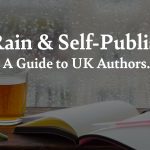Imagination is a boundless realm where ideas come to life, stories take shape, and worlds are crafted. It’s the driving force behind every captivating narrative, and it holds the key to unlocking the magic of creative writing. In this blog, we delve into the elements of creative writing that are fueled by imagination, exploring how to harness its power to craft compelling stories
Understanding imagination and its role in writing
Imagination is the canvas upon which writers paint their stories. It’s the ability to conjure vivid images, emotions, and scenarios in our minds, transcending the limits of reality. In the realm of creative writing, imagination serves as the foundation for storytelling, allowing writers to transport readers to new dimensions and experiences.
Imagination and Writing: A Symbiotic Relationship
Imagination and writing share an intricate symbiotic relationship, each enhancing the other’s potential to craft captivating narratives that capture readers’ hearts and minds. Writing acts as the vessel that channels the boundless energy of imagination, transforming abstract ideas into concrete, relatable stories that readers can immerse themselves in. Imagination, on the other hand, supplies the raw materials, infusing the writing process with creativity, depth, and the power to evoke emotions.
Read: How to Become a Travel Writer – A Complete Guide on Travelogue Writing
Imagine a scenario where the writer envisions an enchanting forest illuminated by the soft glow of fireflies. This mental image is a product of their imagination. However, it’s through the act of writing that this imagery takes shape and becomes accessible to others. As the words flow onto the page, the scene materialises, and readers can envision the magical forest just as vividly as the writer did. Here, imagination laid the foundation, and writing built the bridge to share it with others.
Consider a fictional story where a young protagonist embarks on a daring adventure to save their kingdom. The twists and turns of the plot, the vivid landscapes, and the complex characters are all fruits of the writer’s imagination. However, without skillful writing to weave these elements together, the story might remain a jumble of disconnected thoughts. Writing provides the structure that allows imagination’s creations to be expressed coherently, drawing readers into a world they can explore.
You may also like: 100+ Powerful Descriptive Adjectives to Make Your Writing Vivid
Elements of Creative Writing Nurtured by Imagination
- Narrative Paragraphs: Imagination breathes life into narrative paragraphs, where characters, plots, and settings intermingle to create a cohesive story. It enables writers to craft dynamic characters with distinct personalities and motivations, driving the plot forward with unexpected twists and turns. The magic of imagination transforms mundane scenarios into exciting adventures that captivate readers.
For example, consider a mundane situation where a character is walking to work. With imagination, this simple act can turn into an adventure. Perhaps the character stumbles upon a hidden portal that leads to a fantastical realm, setting the stage for an unexpected journey filled with challenges and discoveries. - Descriptive Paragraphs: Imagination adds depth and colour to descriptive paragraphs, allowing readers to visualise scenes and settings as if they were standing amidst them. Writers use imaginative language to evoke sensory experiences, painting a sensory-rich tapestry that readers can immerse themselves in. Whether it’s the scent of blooming flowers or the rustling of leaves, imagination fuels descriptive writing.
Imagine describing a forest scene with a touch of imagination. Instead of just stating “the trees were tall,” you could evoke a vivid image with “towering trees whispered secrets to the sky, their branches reaching out like ancient storytellers sharing tales with the clouds.” - Exploring Essay Formats: Even in essays, imagination plays a crucial role. It guides writers in generating unique perspectives and insightful analyses. Imagination encourages writers to think outside the box, infusing essays with creative interpretations that engage readers and stand out in a sea of conventional approaches.
For instance, in an analytical essay about a historical event, you could imagine being a fly on the wall during a pivotal moment. This imaginative approach could offer fresh insights into the emotions, motivations, and unspoken dynamics of the event, enriching your analysis.
You may also read: Top 10 Rhetorical Devices Every Writer Should Know
Steps to Channeling Imagination in Writing
- Mindful Observation: Imagination thrives on observation. Pay attention to the world around you—the people, places, and experiences. Observe the nuances, emotions, and interactions that often go unnoticed. These observations can serve as seeds for imaginative stories.
Suppose you observe a hushed conversation between two strangers at a train station. With imagination, you could speculate on their identities, motivations, and the secrets they’re sharing, weaving a tale of intrigue and suspense. - Dreaming Beyond Limits: Embrace the freedom of your imagination. Allow yourself to dream beyond the boundaries of reality. What if animals could talk? What if gravity didn’t exist? These fantastical scenarios can spark creative ideas that lead to innovative storytelling.
Think about a world where humans communicate with animals. You could imagine a heartwarming story where a young girl forms an unlikely friendship with a talking squirrel, leading to adventures that bridge the gap between human and animal perspectives. - Embracing What-Ifs: Imagination is fueled by curiosity. Ask “what if” questions that challenge the norm. What if time travel were possible? What if superheroes were real? Exploring these hypothetical scenarios opens the door to imaginative narratives.
Imagine a society where everyone possesses a unique superpower. How would this shape relationships, power dynamics, and the concept of heroism? By exploring these what-ifs, you create a world ripe for imaginative exploration. - Creating Connections: Imagination thrives when ideas collide. Combine seemingly unrelated concepts to create something new. Merge historical events with futuristic technology or blend cultural traditions with modern settings. These juxtapositions can lead to unique and compelling stories.
Consider a story set in a Victorian steampunk world where advanced technology coexists with the elegance of the 19th century. This fusion of eras adds depth and intrigue to your narrative, sparking readers’ imaginations with the possibilities of a beautifully complex world. - Diving into Emotions: Imagination isn’t just about visuals; it’s about emotions too. Dive deep into the emotional landscapes of your characters. Explore their fears, hopes, and desires. Imagination empowers writers to tap into the universal emotions that resonate with readers.
Imagine a character grappling with a profound loss. By delving into their emotional journey, you can create a story that resonates with readers who have experienced similar feelings. Imagination allows you to convey the depth of these emotions in a way that makes them tangible and relatable.
You may also read: How to Publish a Book | Publish Your Book | BlueRoseOne
Crafting Your Imagination-Infused Writing
Imagination and writing are inseparable partners in the world of creative expression. They collaborate to create narratives that inspire, entertain, and transport readers. By nurturing your imagination and honing your writing skills, you’ll craft stories that leave a lasting impact.
Read: Get to Know What are the Main Elements in Creative Writing.
Immerse readers in worlds they’ve never experienced, challenge their perspectives, and ignite their own imaginative sparks. Whether you’re writing a narrative paragraph, a descriptive passage, or an analytical essay, remember that imagination is your greatest ally. As you embark on your writing journey, let your imagination soar and watch your stories come to life in ways you’ve never imagined before.
















